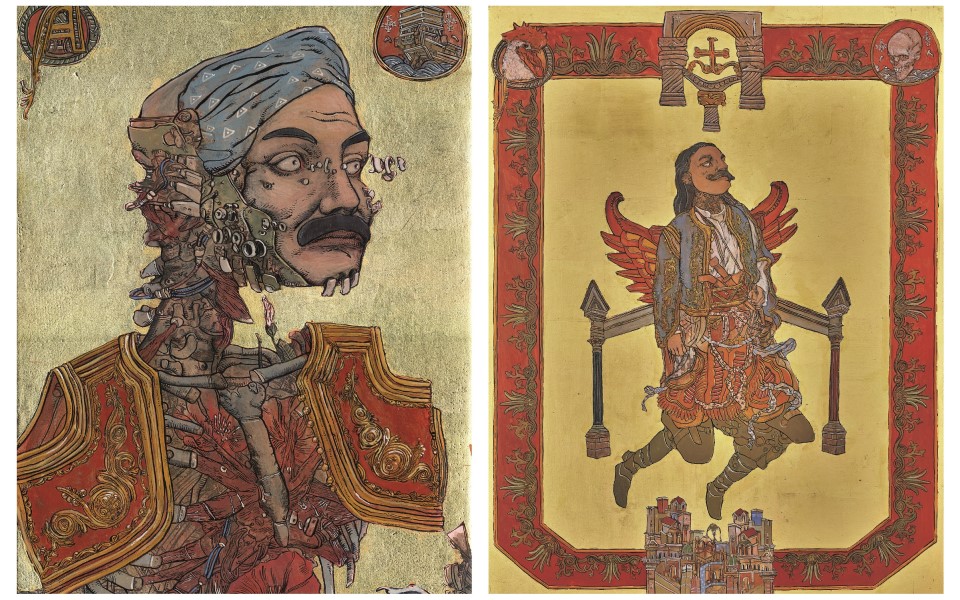The paintings, engravings, portraits, priceless historical items and authentic period furniture on display at the Athens City Museum attest to the lavish lifestyle of Otto and Amalia, the first royal couple to rule the modern Greek state after it emerged from the War of Independence in the 1820s.
My eyes, however, are drawn to a display of kitchenware. What is a humble cake tin doing in the “Old Palace” alongside grand works of art?
“Amalia loved sweets and cakes,” historian and museum director Stefanos Kavallierakis explains, smiling as he notices my surprise. “And, in order to have the butter to make them, she brought cows to the royal estate. The people of that time led normal lives; they weren’t aliens. That’s what I tell all the schoolchildren who visit. They looked for ways to make their lives easier.”
I try to imagine the former palace that forms one part of the museum smelling of fresh butter and vanilla, and of a young Amalia sitting at a table writing letters to her father complaining (as Kavallierakis tells me) about the narrow staircase to the throne room – a small space, though the kingdom was also small – and the royal couple’s private quarters.
Otto and Amalia lived here from 1836 to 1843, before moving to the building that is now home to Greece’s Parliament, where the staircases were certainly grander.
Yet today the Athens City Museum is certainly not lacking in grandeur itself, housed as it is in two of the oldest residential buildings in the city, where it charts the capital’s evolution in the modern era, and particularly the 19th century.

© Dimitris Vlaikos
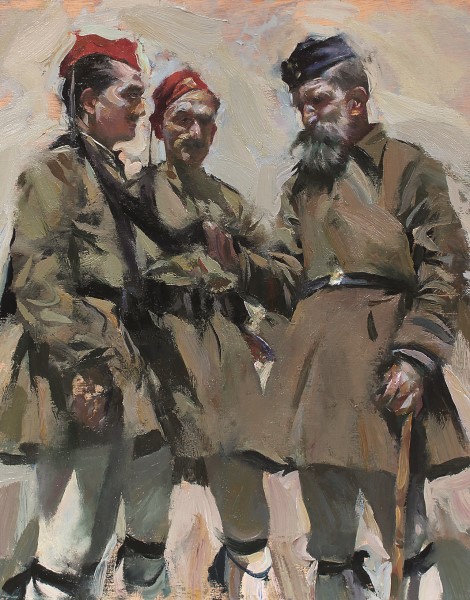
Two worlds
Kavallierakis and I stand in the passage that links the two buildings on Paparrigopoulou Street (at numbers 5 and 7), a walkway that is much like a bridge. Two different worlds are represented on either side: on one is the former residence of Lambros Eutaxias, a cultured politician and art collector who was the founder of the museum and of the Vouros-Eutaxias Foundation, while on the other is the royal couple’s first home.
The museum, too, bridges these two worlds, both of which influenced the course of history in the city and in the country, each in its own way.
Yet another bridge was the recent exhibition “Evzones,” which explored the history of the elite guard founded by Otto through the medium of the visual arts. This exhibition was a prelude of sorts to the events being prepared within the context of next year’s bicentennial celebrations commemorating the outbreak of the Greek War of Independence in 1821.
The first royal residence, says Kavallierakis, was initially connected to another building that was demolished in the 1960s as a remnant of “Bavarian rule.”
“The building is a unique example of Athenian neoclassicism, and we can only wonder why we once felt the need to demolish anything that was symbolic,” Kavallierakis says. “We can look back at the past with a modern point of view, [but] the present is always fluid.”
The dust from a nearby construction site, the noise from the busy street outside and the urban landscape that surrounds both buildings are all signs of the modern city that I almost forget is still out there as we move from the royal dining hall with its elegant tea set to the hall of the privy council, the office of Count Armansperg (a regent and prime minister under Otto) and on to Amalia’s private quarters.
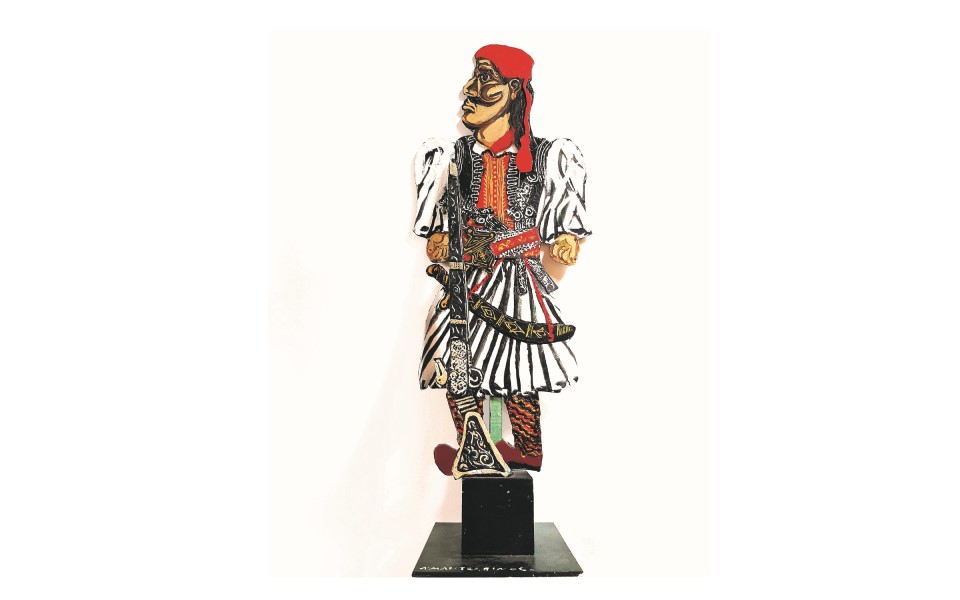
We look at the first handwritten copy of the Greek Constitution and the legendary map drawn in 1836 by Ferdinand Aldenhoven, the one which for the first time included Crete as part of the state’s territory and served as a basis for the “Megali Idea”, the dream of a Greater Greece.
We pause in front of the splendid painting “Carnival in Athens” by Nikolaos Gyzis (1842-1901), which was purchased by the city of Munich in 1893 and returned to Greece as a gift in 1980 to mark the museum’s opening.
Visitors are also drawn to the monumental painting by Jacques Carrey of 17th-century Athens. The five-meter-wide oil painting is one of a kind in that it depicts the city’s ancient wall – of which there is no trace today – as well as the Acropolis as it was in 1674, before the Parthenon was blown up by the Venetian general Francesco Morosini. Carrey was a member of the delegation that accompanied Ambassador Charles-Francois Olier, marquis de Nointel, to Athens on a special mission for Louis XIV of France.
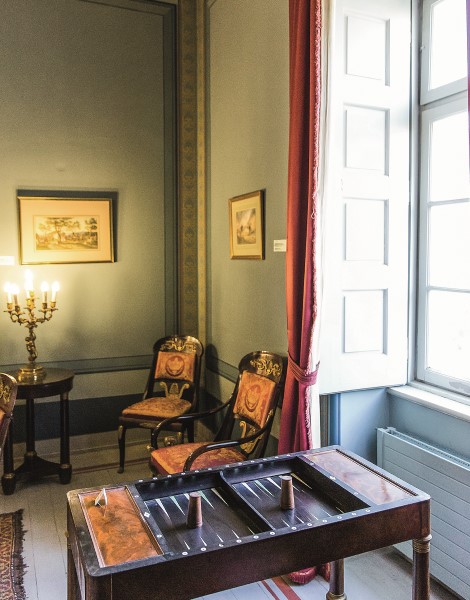
© Dimitris Vlaikos

Tradition and modernity
I cannot help thinking that the Athens City Museum must also feel special to foreign visitors. The wooden floors beneath our feet, after all, have been trodden by countless diplomats, foreign emissaries, nobles, wealthy merchants and bankers, all of whom left something of their spirit in its lofty rooms.
As we return to the corridor to visit the Eutaxias wing, the director points out a portrait of a stern-looking man, who is none other than Nikolaos Vouros, great-grandfather of the museum’s benefactor.
“All of the turbulence of the 19th century is imprinted on his features,” Kavallierakis says of the man who laid the cornerstone of this two-story building in 1859. “Here is a man who watched his father be slaughtered by the Turks in the Chios massacre, who became a merchant and then a banker, and who belonged to one of the most important families in Vienna at the time.”
The rooms here are arranged to reflect the luxurious lifestyle enjoyed by the urban elite. The baroque aesthetic stands in stark contrast to the understated elegance of the adjacent palace, notes the museum’s director.

As we walk past the elaborately carved 16th-century furnishings (which were already antiques when the house was built), the ornate china, the portraits, the paintings by Parthenis, Rallis, Gounaropoulos and Monfort, and the room dedicated to the revolutionary military commander Dimitris Makris, also a member of the revolutionary secret society Filiki Eteria, I ponder on the kind of people forged by the 19th century: battle-hardened, attached to the traditions of their country but also committed to the future, with expectations of a new and better life ahead.
This spirit is beautifully captured in Theodoros Rallis’ painting “Young Woman Looking Out the Window,” which hangs in one corner of the museum. The work by the Paris-based Constantinople-born painter features a beautiful, almost sensual young woman, dressed in a veil yet with her face uncovered: the East meeting and losing ground to the West, tradition meeting modernity.
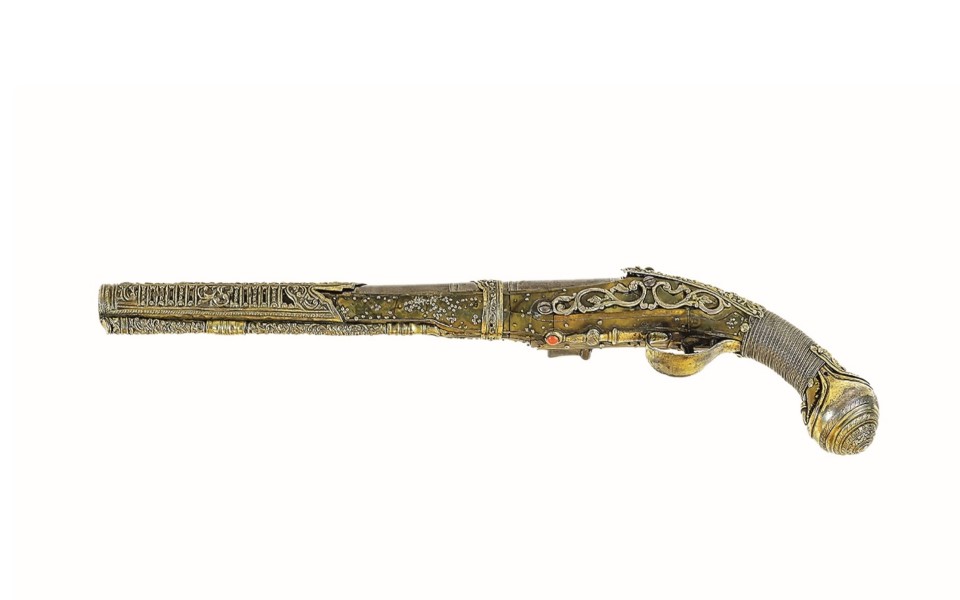
This is the general theme behind the five major exhibitions the museum is putting together to celebrate the bicentennial. “We’re trying to show the connection between tradition and modernity, which is what I personally believe 1821 was all about,”says Kavallierakis. “[The revolution] succeeded in connecting the world of heritage with the world of modern trends at the time. The main show will present exhibit items from the Stavrinakis Collection, including engravings, watches and weapons, alongside our own exhibits.”
The next exhibition will be dedicated to the women of the revolution, with paintings by young artists depicting eight heroines of the 1821 war. That will be followed by original work by the painter and engraver Konstantinos Papamichalopoulos of leading figures of the war, then a show on the revolution as depicted in folk art, another on items related to the Cretan uprisings and, lastly, a show on the Battle of Navarino, with little-known works owned by the museum.
“We want,” says Kavallierakis, “to demonstrate that Greece was culturally an example of a country that developed its patriotism on a foundation of liberty and peaceful coexistence, and also show how this endeavor evolved over the next 200 years.”
This article first appeared in the print issue Greece Is Athens Winter 2020-2021 with the title “Between Tradition and Modernity”. The magazine, along with other past issues, is available for order at our eshop.

